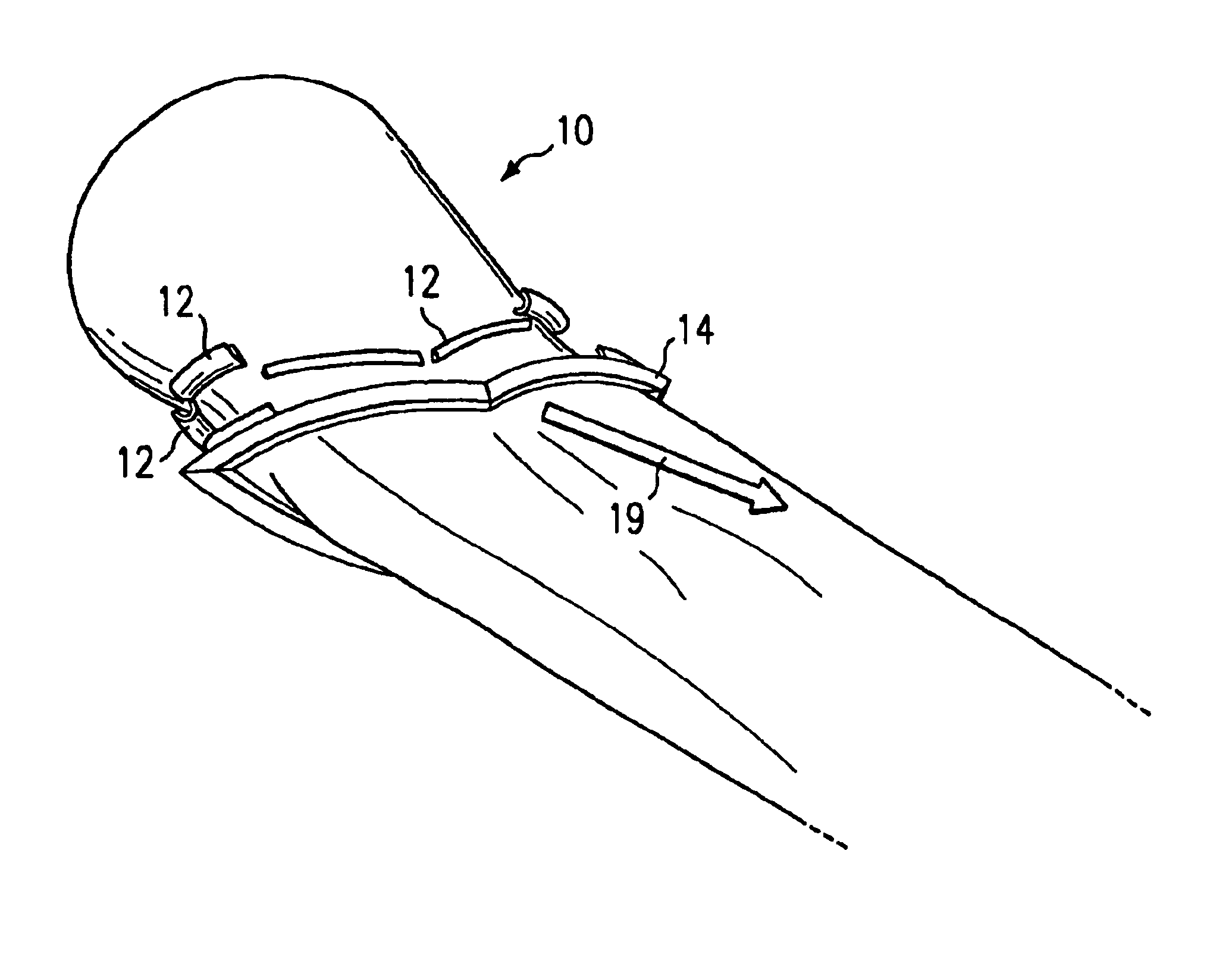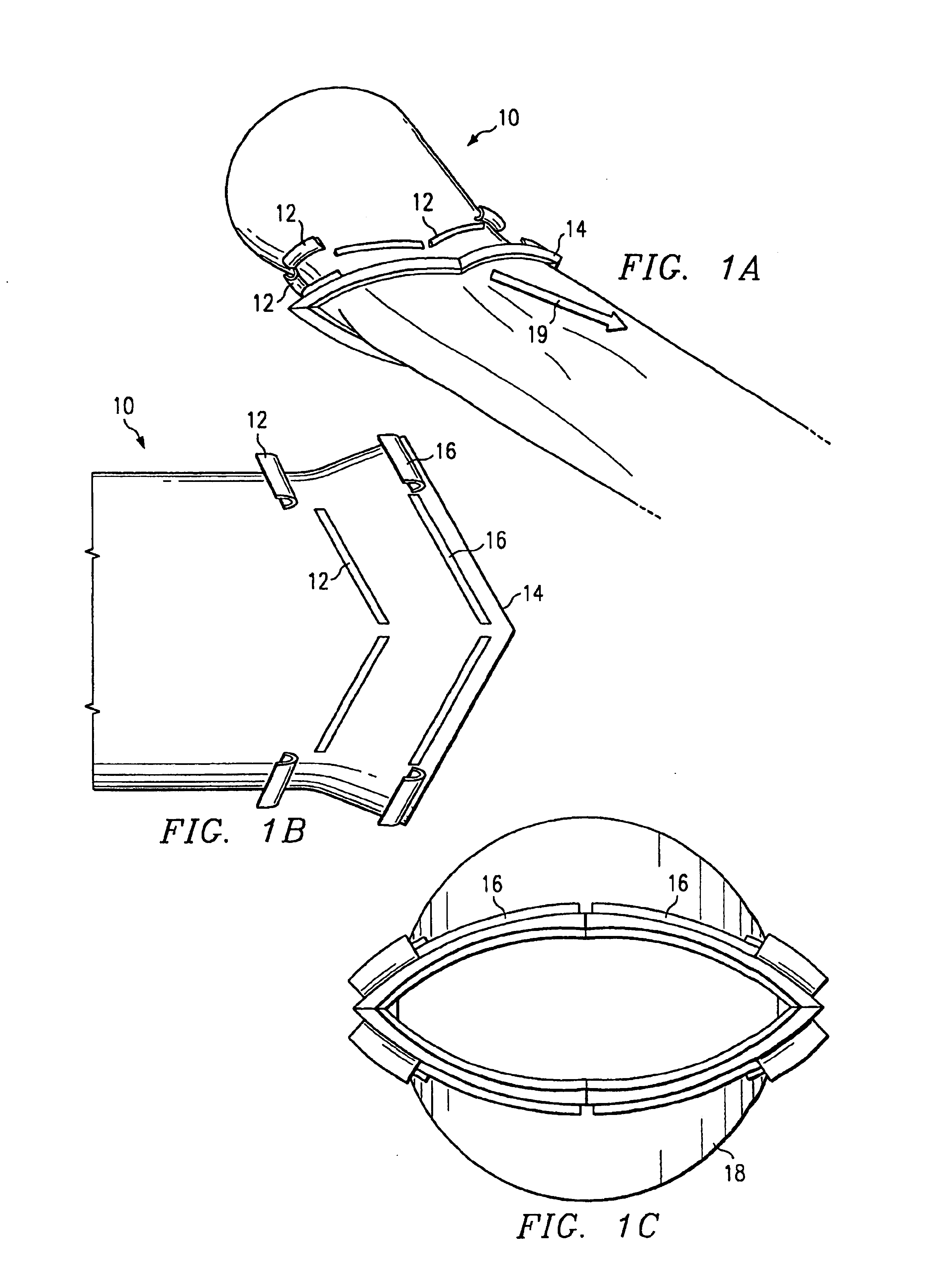Method and apparatus of asymmetric injection into subsonic flow of a high aspect ratio/complex geometry nozzle
a complex geometry, asymmetric injection technology, applied in the direction of waterborne vessels, vessel parts, vessel construction, etc., can solve the problems of increasing the temperature of the exhaust flow, the thrust of the engine, and the reduction of the effective throat area of the nozzle, so as to improve the blending and integration of the aircraft, reduce complexity, and improve the effect of durability
- Summary
- Abstract
- Description
- Claims
- Application Information
AI Technical Summary
Benefits of technology
Problems solved by technology
Method used
Image
Examples
Embodiment Construction
[0034]Preferred embodiments of the present invention are illustrated in the FIGUREs, like numerals being used to refer to like and corresponding parts of the various drawings.
[0035]The present invention reveals a method and apparatus for controlling the effective area and thrust vector angle of a fluid flow. In one embodiment, the fluid flow is controlled in an advanced, high aspect ratio, complex aperture geometry nozzle using asymmetric injection into the subsonic portion of the fluid flow.
[0036]Fluidics alter the mass flow and direction of a main fluid stream, or primary fluid flow, by the introduction of small control jets. Small disturbances created by injectors at points along the primary fluid flow produce large responses in the main stream. Fluidic injection is used to provide internal flowpath shape variation for jet control in nozzles and holds the promise of reducing the weight and complexity of future exhaust systems by eliminating mechanical flowpath actuation. By intro...
PUM
 Login to View More
Login to View More Abstract
Description
Claims
Application Information
 Login to View More
Login to View More - R&D
- Intellectual Property
- Life Sciences
- Materials
- Tech Scout
- Unparalleled Data Quality
- Higher Quality Content
- 60% Fewer Hallucinations
Browse by: Latest US Patents, China's latest patents, Technical Efficacy Thesaurus, Application Domain, Technology Topic, Popular Technical Reports.
© 2025 PatSnap. All rights reserved.Legal|Privacy policy|Modern Slavery Act Transparency Statement|Sitemap|About US| Contact US: help@patsnap.com



